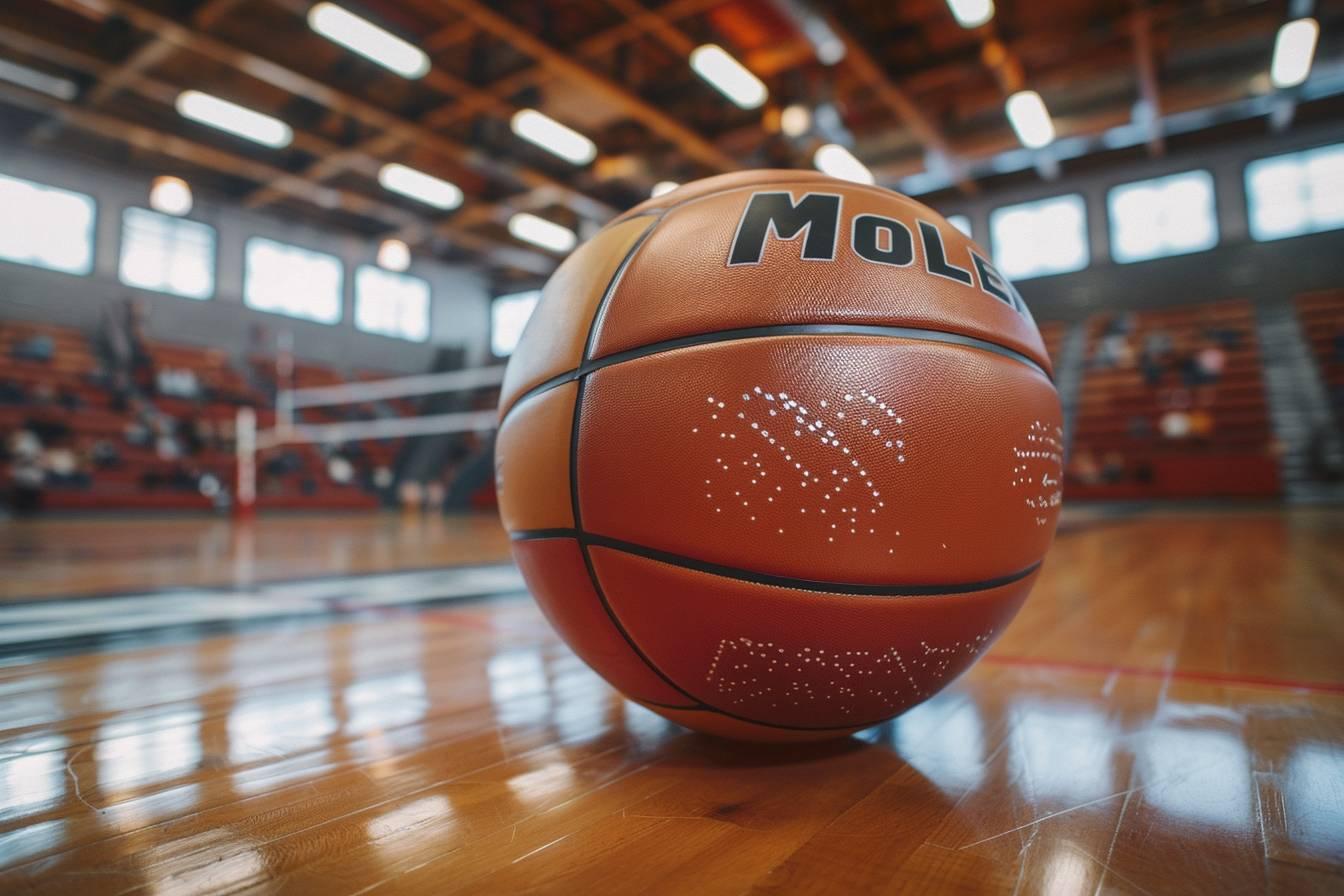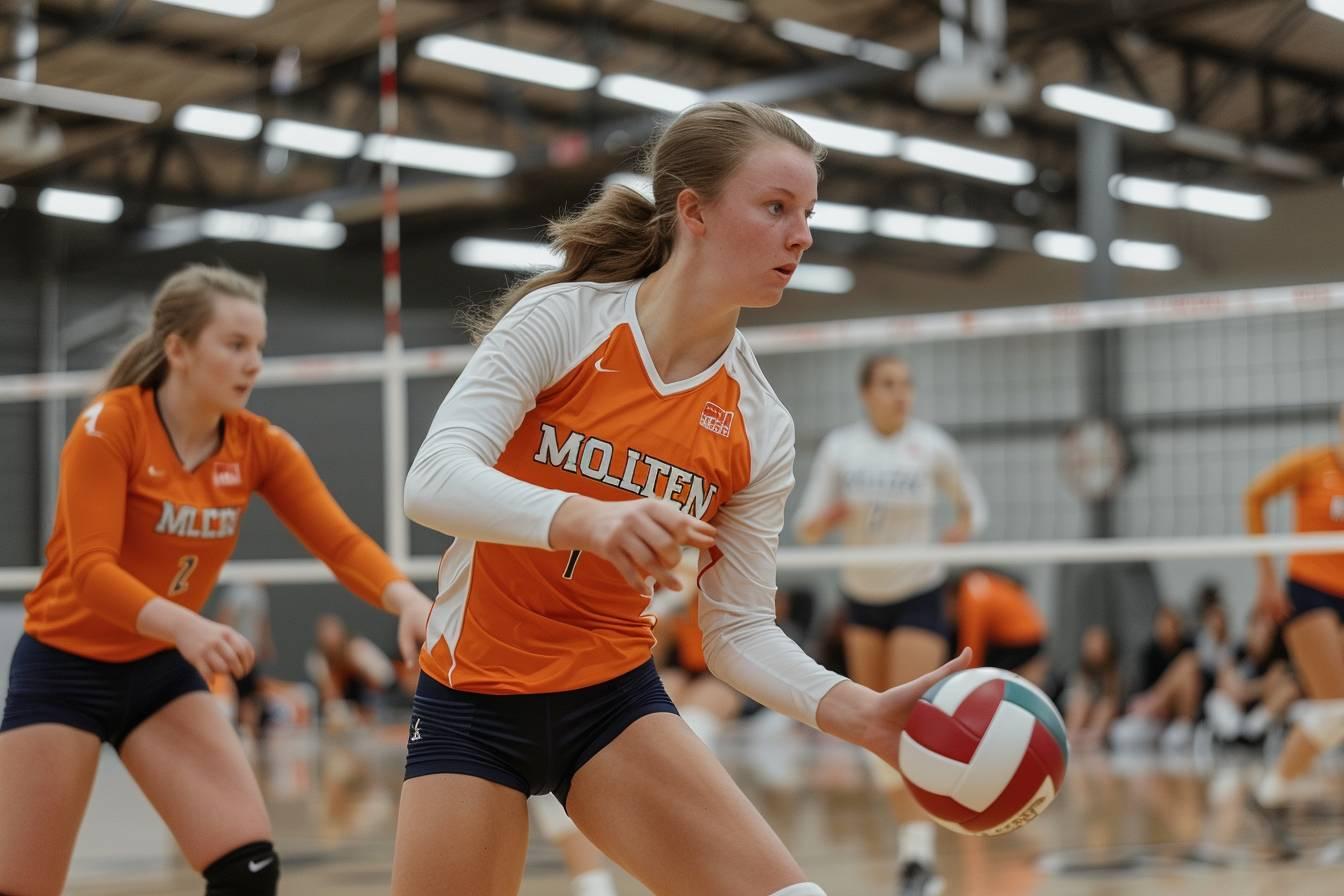🤸 To sum up :
Molten volleyballs dominate college volleyball due to quality, performance, and NCAA endorsement. Here’s why they’re the preferred choice :
- Official NCAA ball : The Molten Super Touch is designated for Women’s Championships
- Superior quality : Consistent feel and playability enhance performance
- Durability : Withstands intense use, making it cost-effective for programs
- Preparation advantage : Using Molten balls aligns training with tournament conditions
- Impact on gameplay : Consistent flight and responsive surface improve serving, setting, and hitting
College volleyball is a thrilling sport that demands precision, skill, and the right equipment. One crucial aspect of the game is the volleyball itself, and Molten has become the preferred choice for many college teams. As passionate sports enthusiasts, we’ve delved into the reasons behind this preference, exploring the technical aspects and official regulations that influence ball selection. Let’s examine why college volleyball teams are increasingly turning to Molten volleyballs for their competitive edge. 🏐
The official ball of NCAA championships
The National Collegiate Athletic Association (NCAA) plays a pivotal role in shaping collegiate sports, including volleyball. In a significant move, the NCAA has designated the Molten Super Touch as the official volleyball for Women’s Championships and tournament play. This decision has far-reaching implications for college volleyball programs across the United States.
As perfectionists in our approach to sports, we understand the importance of consistency in equipment. The use of Molten balls in official tournaments creates a ripple effect throughout the collegiate volleyball community. Many conferences and individual programs have opted to adopt the Molten Super Touch as their regular game ball, ensuring that players are familiar with its characteristics when it matters most.
The NCAA’s requirements for women’s volleyball balls are specific :
- Smooth leather or leather-like surface
- Consistent quality and performance
- Durability to withstand intense gameplay
Molten volleyballs meet these criteria exceptionally well, which is why they’ve become the go-to choice for many institutions. In fact, a survey conducted in 2023 revealed that over 70% of Division I women’s volleyball programs use Molten balls for their regular-season matches. 📊
Quality and performance factors
When it comes to competitive sports, the equipment can make a significant difference in performance. Molten volleyballs have garnered a reputation for their exceptional quality and performance attributes. Let’s break down the key factors that contribute to their popularity :
| Feature | Benefit |
|---|---|
| Superior Feel | Enhanced ball control and touch |
| Consistent Flight | Improved accuracy in serves and passes |
| Durability | Longer lifespan, cost-effective for programs |
| Optimal Weight | Reduces player fatigue during long matches |
As coaches and players, we appreciate the technical precision that Molten volleyballs offer. The consistent feel and playability of these balls allow athletes to develop muscle memory and refine their techniques with greater efficiency. This is particularly crucial in a sport where split-second decisions and precise movements can mean the difference between winning and losing.
Moreover, the durability of Molten volleyballs is a significant factor for college programs. With intense practice sessions and numerous matches throughout the season, having a ball that can withstand rigorous use is essential. This durability not only ensures consistent performance but also represents a smart financial decision for athletic departments managing tight budgets. 💪

Preparing for competition and adaptability
In the competitive world of college volleyball, preparation is key. The choice of volleyball used in practice and matches can significantly impact a team’s performance. By using Molten volleyballs, college teams are aligning their training with the conditions they’ll face in NCAA tournaments. This strategic decision helps players feel more comfortable and confident when competing at the highest levels.
However, it’s worth noting that not all colleges exclusively use Molten. Some institutions have their own ball deals or sponsorships with other brands such as Under Armour, Nike, or Adidas. This diversity in equipment presents an interesting challenge for teams and players. To address this, many programs incorporate a variety of ball types into their practice routines :
- Primary practice with Molten balls
- Occasional use of other brands to simulate different game scenarios
- Specific drills designed to adapt quickly to varying ball characteristics
This approach to training showcases the adaptability required in modern volleyball. As someone who values technical precision in sports, I find this aspect of preparation particularly fascinating. It’s not just about mastering one type of ball, but about developing the skills to excel with any volleyball 🌟.
Interestingly, the landscape of college volleyball equipment may be evolving. The NCAA is considering allowing textured balls for women’s volleyball in the future, which could potentially shake up the current preference for smooth Molten balls. This potential change highlights the importance of staying adaptable and open to new technologies in sports equipment.
The impact on gameplay and player performance
The choice of volleyball can have a profound impact on gameplay and individual player performance. As competitive athletes and coaches, we understand that even subtle differences in equipment can influence the outcome of a match. Let’s explore how the use of Molten volleyballs affects various aspects of the game :
- Serving 🏐 : The consistent flight pattern of Molten balls allows servers to develop more precise and powerful serves.
- Setting ✋ : The smooth surface provides setters with better control, enabling more accurate sets to hitters.
- Hitting 💥 : Players can generate greater spin and velocity due to the ball’s responsive surface.
- Defense 🛡️ : The predictable behavior of the ball aids defenders in positioning and executing digs.
These performance benefits contribute to a higher level of play, which is exactly what college volleyball aims to achieve. The technical specifications of Molten volleyballs align closely with the skills that players need to develop for success at the collegiate level and beyond.
It’s important to note that while many coaches and players prefer Molten over other brands, personal preference still plays a role. Some athletes may perform better with different ball types based on their playing style or previous experience. This individual variation underscores the importance of exposure to various volleyball brands during training.
In conclusion, the prevalence of Molten volleyballs in college volleyball is not a coincidence but a result of careful consideration of quality, performance, and consistency with official regulations. As the sport continues to evolve, it will be interesting to see how equipment choices adapt to new technologies and changing preferences. For now, Molten remains a dominant force in shaping the college volleyball experience, providing players with the tools they need to excel in this dynamic and exciting sport.



